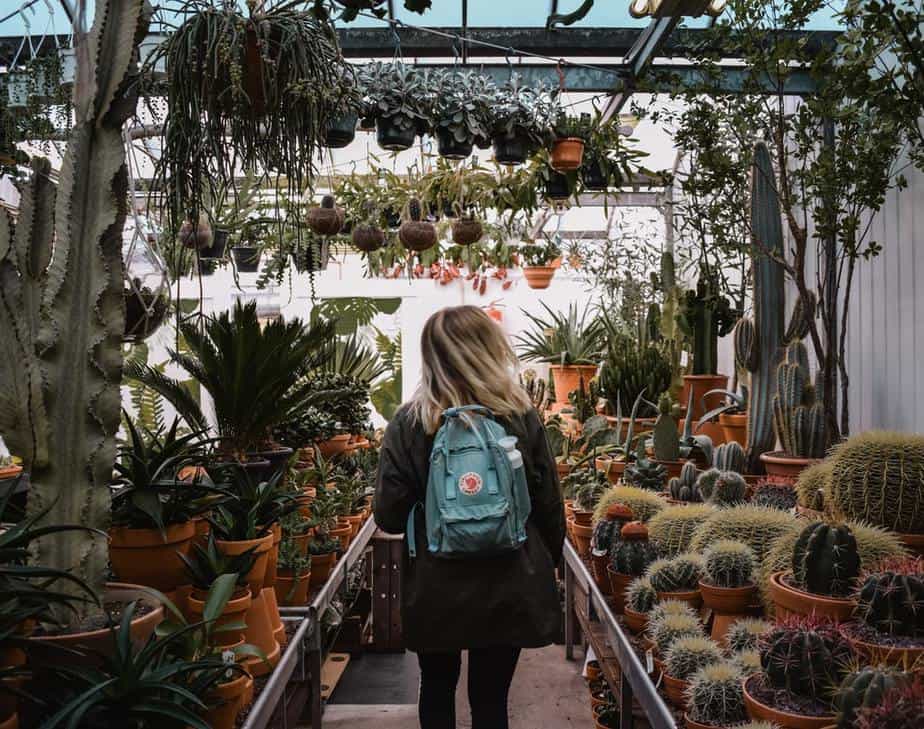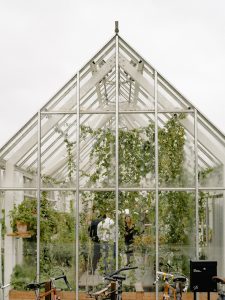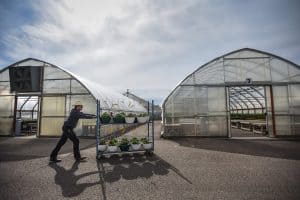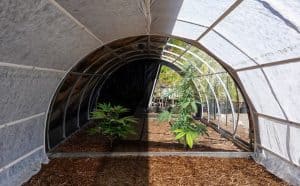Many gardeners use their greenhouses to extend the growing season, but it’s also a great way to protect cold-sensitive plants such as succulents and cacti. Succulents are quickly becoming a favorite among gardeners, but unless you live in a climate that’s warm year-round, it can be a challenge to keep them healthy.
Succulents are a popular houseplant and are frequently grown indoors, but many gardeners simply don’t have the right indoor environment for succulents to thrive. Many species need a lot of light, and not everyone has enough window space in their homes. However, a greenhouse is ideal for growing both succulents and cacti. If you want to grow succulents in a greenhouse, then you’ve come to the right place.
Why Grow Succulents in a Greenhouse?

Greenhouses make it possible to grow succulents outdoors while still maintaining control over their water and light intake. If you’re a succulent lover who happens to live in a cold or wet climate, growing succulents outdoors without a greenhouse can be impossible.
However, with a greenhouse, your precious plants are protected from the potentially damaging effects of Mother Nature. A heated greenhouse can easily provide the right environment to keep your succulents alive and well no matter what the weather may bring.
Inside of a greenhouse, your succulents will have a roof over their heads, so you won’t need to worry about overwatering during rainy weather. Additionally, they’ll be able to receive plenty of sunlight, which can be challenging to provide in some indoor spaces.
For those species that need to avoid full sun, it’s a simple process to set up an area of your greenhouse that can protect your plants with a simple shade cloth.
As for the temperature, this is where greenhouses really come in handy. Few species of temperatures are hardy enough to tolerate temperatures below freezing. In a greenhouse, especially one equipped with a heat source, your succulents can stay warm and comfortable no matter the season or weather.
Learn about winterizing your greenhouse here.
Additionally, succulents tend to grow relatively slowly, so you won’t need to worry about them taking over your greenhouse any time soon. Regardless of the size of your greenhouse, you can make the most of your space knowing that your succulents aren’t going to outgrow it any time soon. And, if for some reason your succulents do grow faster than expected you can always propagate your fat plants!
The Ideal Greenhouse Environment for Succulents
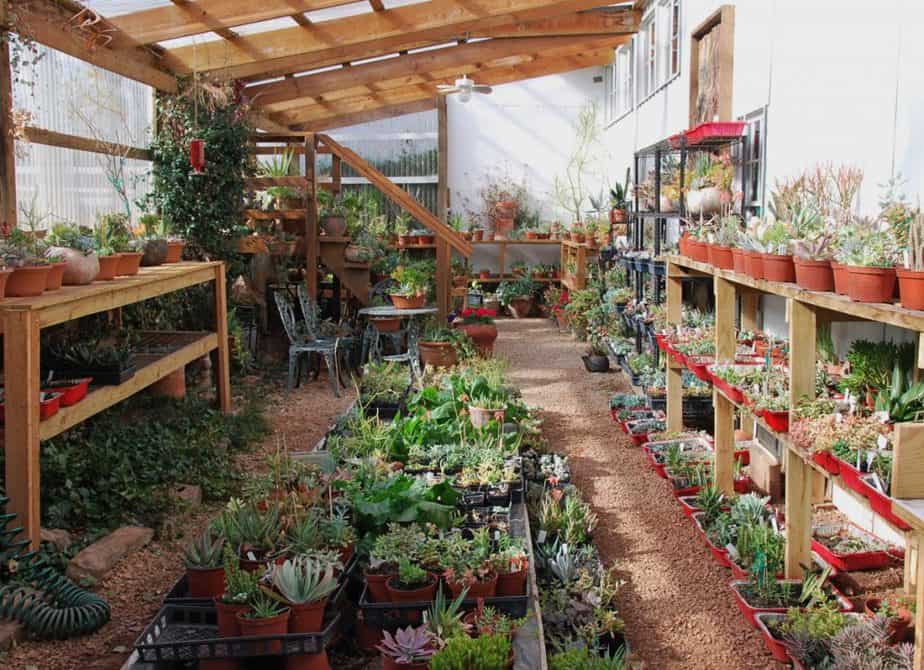
Since most succulents are native to hot, dry areas of the world, the better you can replicate their natural environment, the better your drought-loving plants will grow. Remember, few species can tolerate freezing temperatures, so a warm greenhouse is a must.
Depending on the type of greenhouse you have, you have more than a few options in terms of heat. Whether you rely on the sun or prefer to use an electric, gas, or kerosene or paraffin heater, you’ll need to make sure that temperatures do not drop too low for your succulents to handle.
However, it’s important to remember that humid and stagnant air can cause your succulents’ soil to hang on to moisture for much longer than necessary. If you aren’t careful, this can lead to root rot.
Remember, succulents are used to infrequent water and tend to grow in fast-draining soil, so if your plants sit in overly moist or wet soil for too long, rot is inevitable. Root rot is especially risky if you water your succulents on a schedule rather than first checking the soil’s moisture levels.
To prevent your succulents from rotting, you’ll need to ensure that your greenhouse has some type of ventilation. Ventilation will allow hot, moist air to escape, replacing it with fresh air. That fresh air is essential for healthy growth and the prevention of fungus and disease.
Read our greenhouse ventilation guide here if you’re not quite sure how to heat or ventilate your current greenhouse and need a little guidance on the matter.
Depending on your greenhouse and where you live, you may also want to consider equipping your succulent greenhouse with grow lights. Wintery, overcast days are no match for the right grow lights. They’re a great way to ensure your succulents are getting enough light, no matter the time of year or the weather.
Caring for Succulents in a Greenhouse
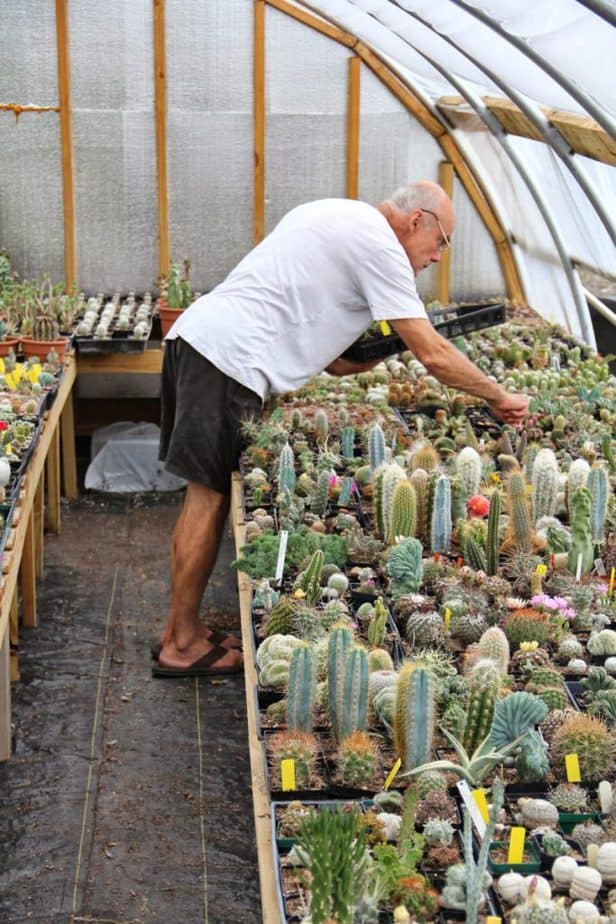
Taking care of your succulents in your greenhouse isn’t much different from caring for them indoors or outside. The biggest worry you’ll have is overwatering, so make sure that you’re watering them only when necessary.
Most succulents prefer the “soak and dry” method of watering. This methodology means that you’ll soak the soil thoroughly and then allow it to completely dry out again before the next watering. Be sure to check the soil before you water with either your finger or a soil moisture meter to make sure you aren’t watering already moist soil.
It’s also important to note that some species of succulents go dormant during different seasons of the year. Dormancy can affect their need for water, so be sure to research the species you’re growing to make sure that you’re providing them with the proper schedule of care.
The amount of light your succulents need will depend on the species, so again, it’s essential to know what you’re growing and what its needs are. However, light can easily be adjusted with the use of shade cloths or grow lights.
When planting your succulents in a greenhouse, it’s crucial that you only use well-draining soil. Commercial soil mixes formulated for succulents and cacti are a great start, or you can mix your own. Just be sure that the soil contains plenty of drainage promoting ingredients such as coarse sand, gravel, perlite, or pumice.
Watch a video comparing a popular commercial mix with a self-mixed succulent soil to better understand what your succulents and cacti need.
Finally, it’s worth noting that succulents tend to prefer a more hands-off approach to care than many other types of plants. These fat plants thrive on neglect, so it’s best to take a “less is more” approach to your succulent gardening.
If you have other crops in your greenhouse besides succulents, you’ll need to ensure that your succulents are on a different care schedule. If you water your succulents as frequently as your water your flowers or vegetables, you’re going to end up with very unhappy succulents.
Fortunately, most species of succulents and cacti are pretty forgiving in terms of care. These low-maintenance plants are a fun addition to any plant collection, so don’t be afraid to welcome a few succulents into your greenhouse.

